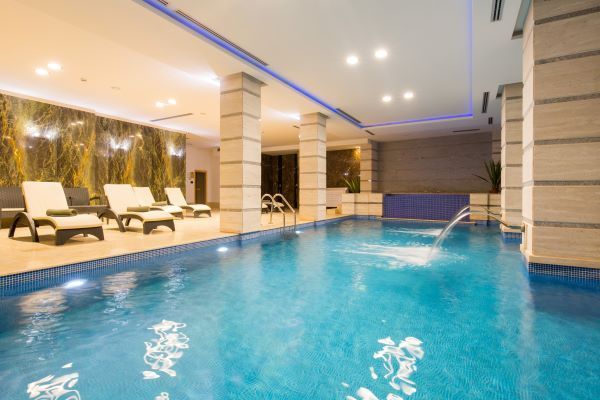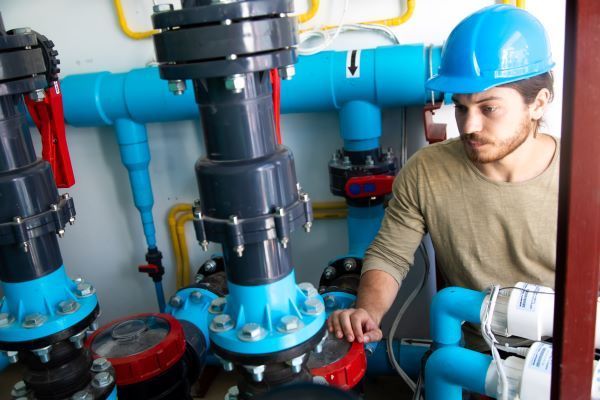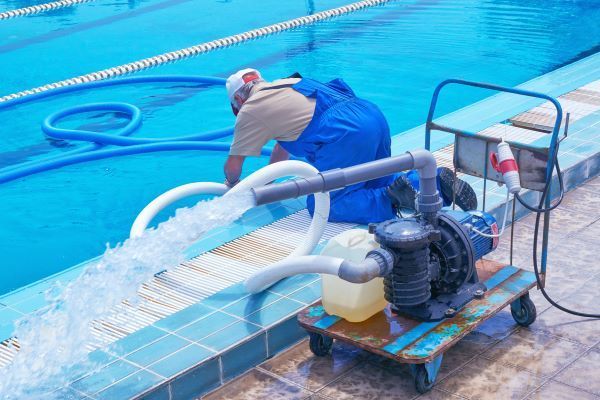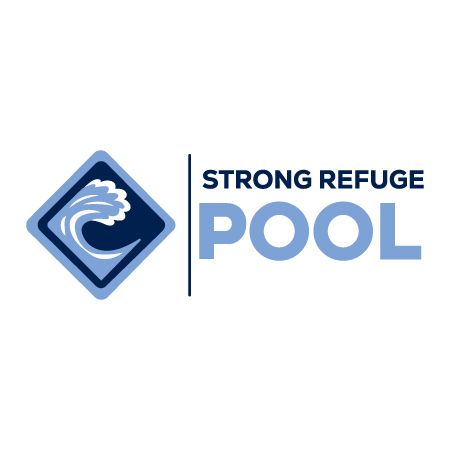Year-Round Commercial Pool Care: Tailored Solutions for Business Properties
Year-Round Commercial Pool Care: Tailored Solutions for Business Properties
A dip in the pool can be a relaxing escape and a refreshing reprieve from a hot summer day. But in order to ensure your business’s pool is always primed for optimal use, you’ll need to care for it year-round. If you’re wondering about the best way to properly maintain your pool, Strong Refuge Pool is your commercial pool services expert in Washington. We’ll give you a rundown of what you need to know about caring for your pool year-round.
Our recommended maintenance tasks are organized based on how frequently you should perform them. Here’s an overview of what to do daily, weekly, monthly, and seasonally when it comes to maintaining your commercial pool.
Daily Maintenance
In order to keep your commercial pool well-maintained, you should test pH and disinfectant levels at least twice a day. During increased pool usage, you may want to test these levels on an hourly basis.
The pH level of the water should read between 7.2 to 7.6. If you find that the pH level is above 7.8, you’ll need to add an acid to balance it out. If it’s less than 7.2, add an alkaline to adjust the measurement.
Anyone responsible for handling pool chemicals should be trained in how to use them safely, including the proper response to pool chemical spills. Pool chemicals can be hazardous to your health and should be properly stored and handled at all times.
Free chlorine levels should fall between one and three parts per million. Should your chlorine levels be too high, use a neutralizing agent or leave your pool uncovered in direct sunlight until levels are reduced. If chlorine levels are too low, add chlorine sparingly until the desired level is reached. Be sure to keep detailed records of all pH and disinfectant level measurements.
You should also check and maintain the filtration and recirculation systems according to the manufacturer’s specifications. Typically, you’ll need to clean your filter once the pressure has increased by 5.0 to 10.0 psi.
If there are any leaves in the pool, be sure to remove them using a pool skimmer or other instrument. You should also vacuum the pool floor and walls to remove any accumulated dirt and debris.
Weekly Maintenance
Perform a biocidal shock treatment on your pool a minimum of once a week. Depending on your pool’s water quality, you may need to do this more frequently. The shock treatment will remove pathogens and other contaminants from your pool.
The best time to shock the pool is in the evening after the sun has gone down. Before you get started, you’ll need to measure your free chlorine and total chlorine levels. Then subtract the free chlorine reading from your total chlorine reading.
Once you have your combined chlorine measurement, multiply it by 10. This is known as the breakpoint level. After you’ve calculated your breakpoint level, you’ll subtract the free chlorine reading from it. This is how much you want your water to change in parts per million.
The product instructions should tell you how much of the solution you’ll need to raise the pool’s chlorine level by 1 ppm based on 10,000 gallons. If so, divide your pool’s volume by 10,000 gallons and then multiply the amount of solution by the pool’s volume (e.g., 8 if you have an 80,000-gallon pool) and by the amount your water needs to change (again, this is the breakpoint level less the free chlorine reading). This will give you the amount of solution you need to add to your pool. Double-check to make sure your calculations are correct.
Be sure to wear gloves and goggles before you start the shock treatment. Check that your filter is on, and then add the concentrated chlorine in either liquid or powder form around the edge of the pool.
Once you’ve added the solution, brush the pool floor and walls to remove any dirt. Be sure to brush along the water line as well to prevent a permanent line from forming. Keep the pool running overnight to filter out any loosened debris.
Monthly Maintenance
You should drain portions of your pool and replace those portions with filtered or fresh water on a monthly basis. Keep in mind, you may need to do this more or less frequently depending on usage.
If you choose to drain the pool manually, you will pump the pool water directly to the drain. Alternatively, you could use an automated or reverse osmosis process.
With reverse osmosis filtration, water passes through a membrane filter which will prevent dissolved minerals and suspended particles from making their way through. You’ll then dispense the trapped particles and minerals to sanitary sewer lines, while the filtered water will be returned to the pool for continued use.
Seasonal Maintenance
If you reside in the Pacific Northwest, it’s likely you’ll need to winterize your pool. In order to ensure it’s in prime condition for the start of swim season, follow our tips for winterizing your pool the right way, or give us a call so we can take care of the winterization process for you. Properly maintaining and winterizing your pool will make it easier to reopen as soon as the warmer months are upon us.
Looking for a commercial pool services expert in Washington? Strong Refuge Pool can assist you with your pool repair and maintenance needs. From chemical product orders to pool equipment servicing and installation, we’re your Pacific Northwest commercial pool experts.
Allow us to dive right into the hard work of maintaining your commercial pool year-round so you can lay back and relax, soak up the sun, and simply enjoy the pleasures of owning one.



